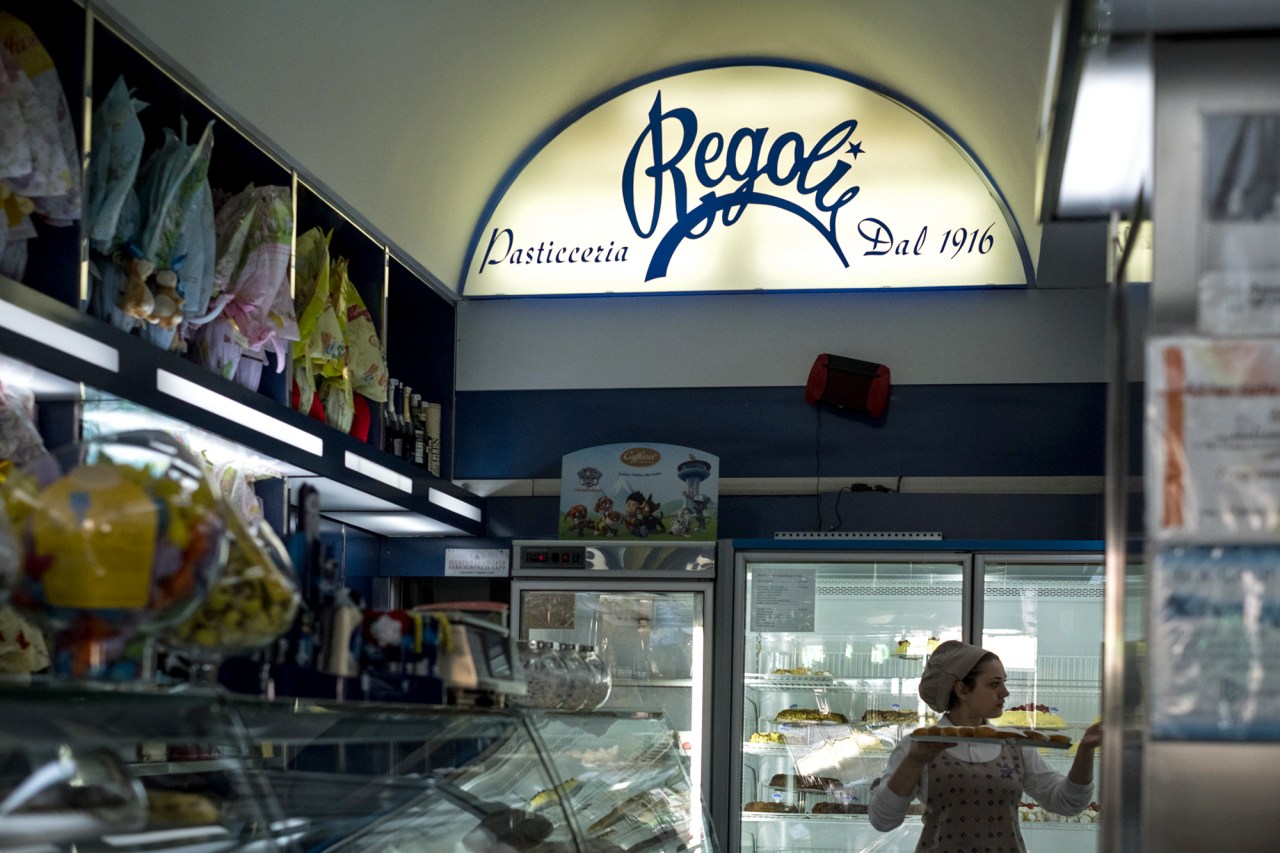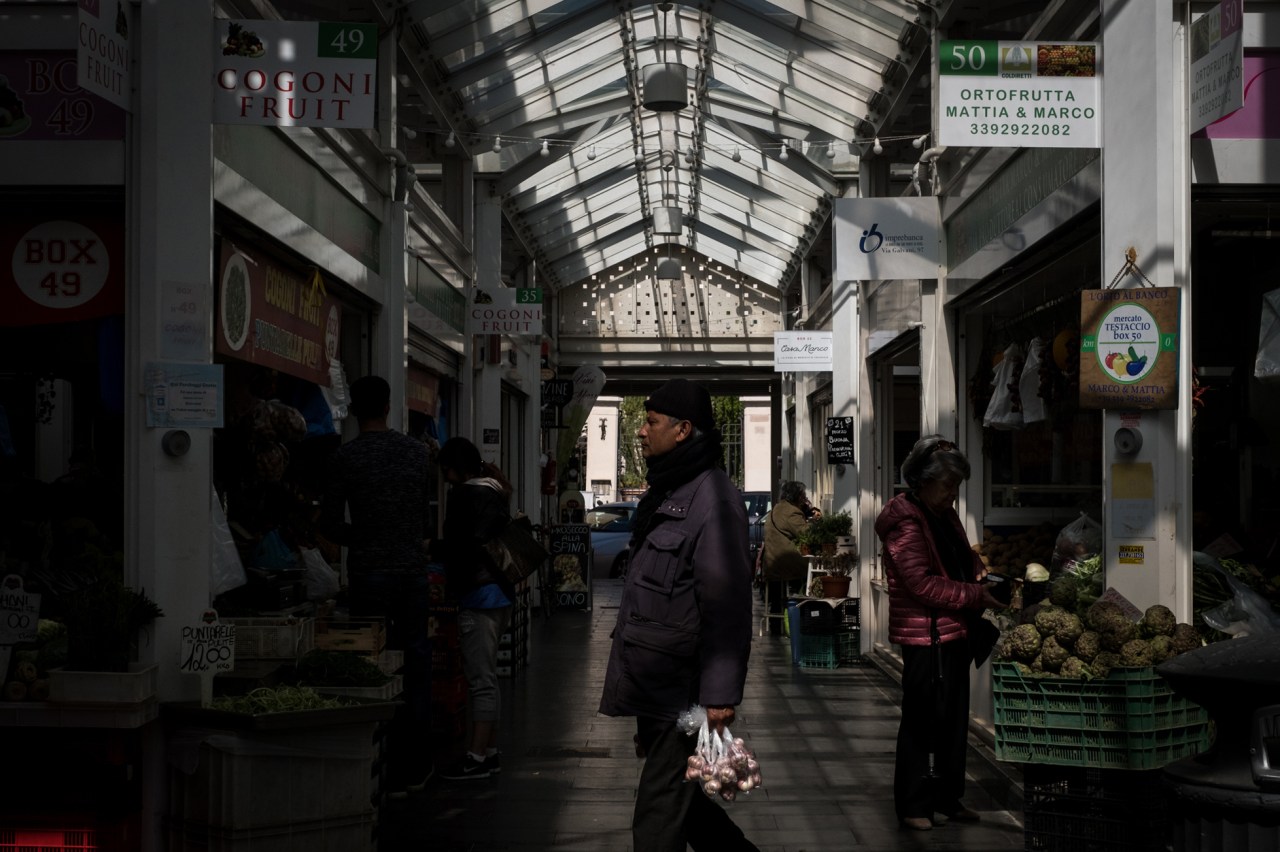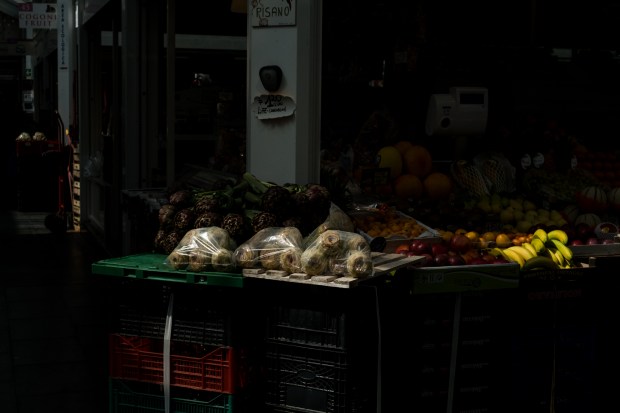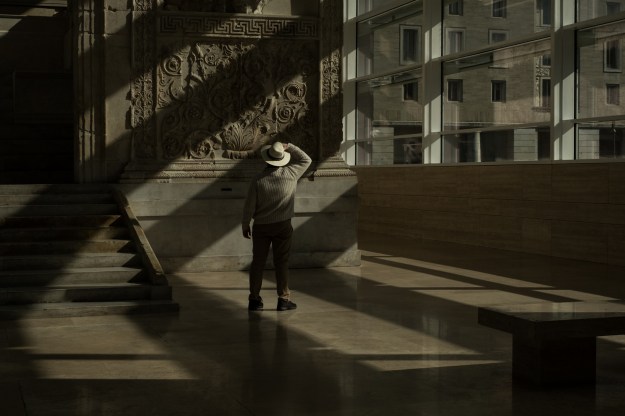Wide avenues lead to imposing monuments such as the Colosseum or St. Peter’s Basilica; picturesque alleys and unexpected squares in the historic center of the city; suburban roads that are dull, yet bustling with people. Apart from the majestic historical buildings, the quintessence of Italy’s capital city lays in its streets. Places of beauty and authenticity, of appearance and truth—they are the perfect paths to wander in search of art as well as food.
Both street art and street food are traditions here, dating back to the ancient Rome of Cicero’s time and recently rejuvenated as hip trends.
Vintage Ape Cars turned into imaginative food trucks—combining the iconic Italian vehicle from the ‘50s with the national obsession for eating wherever and whenever—are extremely popular. Murals found on the streets are just as prevalent as the food trucks, often blending aesthetics with socially relevant messaging. In both cases, what was underground culture is quickly becoming a mainstream trend. Still, walking along Rome’s streets offers some eye-opening and mouth-watering encounters.
Start the day as the Romans do, with maritozzo: a small, slightly sweet bun made of flour, eggs, honey, butter, and salt, usually served cut in half and filled with a generous amount of whipped cream. Its name—marito means husband in Italian—probably refers to a tradition where men offered this sweet roll to their fiancées as an engagement vow, hopefully filled with a ring. That custom is long gone, but maritozzi are easily found in nearly every Roman bakery. A local favorite, Regoli is a retro-style pastry shop not too far from Termini, the city’s main train station. Here, the recently launched Mercato Centrale brings—under the same roof—some of the best Roman gourmet street food, from Gabriele Bonci’s pizza al taglio to the brilliant trapizzino (a triangle-shaped focaccia filled with typical Roman sauces—try the oxtail with tomato sauce) created by Stefano Callegari.

Walking along Via Cavour offers different options: the Colosseum on the left, and the narrow streets of the Monti borough, full of small shops and cafés, on the right. Or, head towards Piazza Venezia and the “Altare della Patria,” the imposing monument honoring King Victor Emmanuel; Romans usually refer to it as “The Wedding Cake.” A few steps further is the so-called Roman Ghetto, the area where a Jewish ghetto was established in 1555 (to last until 1850). At the Antico Forno Urbani, indulge in one of the most typical Roman street foods: pizza e mortazza; a focaccia filled with mortadella. The kosher oven has been baking bread and pizza since 1927. If mortadella isn’t for you, try their assortment of typical Italian hams and salami, sold in a separate shop according to the kashrut rules.
Follow the river Tiber towards the picturesque area of Trastevere, stopping by the kiosk of Sora Mirella, near the Tiber island, to try grattachecca, a refreshing slush made of freshly grated ice and syrup or fresh fruit, like peach, melon, and pineapple. The Trastevere maze of alleys and little squares is packed with pubs, tacky restaurants, and rowdy tourists; yet, not too far and a bit secluded, the Botanical Garden of Rome is a verdant, quiet oasis, with Mediterranean and tropical plants as well as a romantic Japanese garden. At noon, the daily rumble of the Gianicolo’s hillside cannon shot will remind you it’s time to go grab some food.

Food markets are amongst the best places to understand the soul of Rome, and the Testaccio Market is probably the most authentic. The quinto quarto tradition was born here when the butchers working at the local slaughterhouse came up with tasty ways to consume cheap meats or discarded cuts. Today, the market is a lively spot where the stalls selling vegetables, meat, and fish stand side-by-side with street food stalls offering hearty bites or gourmet options. Try the panini stuffed with traditional recipes such as picchiapò beef or meatballs at Mordi e vai (stall 15), and the inventive salads, sandwiches, and soups created by Michelin-starred chef Cristina Bowerman at Cups (stall 44). After eating, browse the area right outside the market to visit the archeological remains and glance at some great street art works such as the huge she-wolf—the symbol of Rome—painted on the side of a building by the Belgian artist Roa.

Now back to the center. Walking along the Tiber River again you’ll find the Ara Pacis Museum, home to an impressive combination of history and contemporary design. The monumental altar constructed by Emperor Augustus is surrounded by a linear structure of plaster, travertine, and glass designed by the American architect Richard Meier. And you don’t even have to enter the building to admire art: on the sidewalk close to the Ara Pacis there is an open-air museum created by urban artist Fausto delle Chiaie: a collection of ironic pieces created out of discarded items accompanied by witty handwritten captions. As the title of a dedicated short-film reminds you, the museum shuts down when the artist is tired.


Walking the streets of Rome, stop by Supplizio for a gourmet yet genuine version of one of the more famous Roman street foods: supplì, the fried rice bite flavored with either a hearty red meat sauce or traditional chicken offal white sauce. Hardly “torture” despite it being the precise meaning of the shop’s name, a play on the word supplì.
Time to relax and sit down for one of the most quintessential Italian rituals: aperitivo. Forget the trendy venues and try to catch a table or at least a stool at Il Goccetto, one of Rome’s oldest wine bars, to sip a good glass of wine and snack on some cold bites while enjoying the retro atmosphere.
Escape the crowded and noisy streets of the city center and head to the suburbs—take a taxi or the new “C line” subway train—for an outstanding dinner in Centocelle, a working class borough east of the city, born around the local military airport in the mid-20th century. The name may not ring any bells; with its quiet streets named after trees and flowers and its anonymous buildings it hasn’t been trendy until recently, when some food entrepreneurs not able to afford central Rome’s rents decided to establish their businesses here. Mazzo, the informal and tiny restaurant set up by chefs Francesca Barreca and Marco Baccanelli, has one single family-style table for 10 (plus some counter seats), a remarkable list of organic wines, spirits, and cocktails, and a filling and creative cuisine. The menu is constantly changing, but don’t be surprised to find fresh noodles with squid, shrimp, and bread crumbs, fried eels with garlic mayo, or more traditional pasta dishes such as fettuccine with lambo and cacio e ovo (cheese and egg) sauce, amongst other options.

Likely, it will be too late and dark by the time you leave Mazzo to catch sight of the street art that decorates local buildings. But keep an eye out for the Forte Prenestino squat and social center, one of 15 such self-funded, leftist social centers in Rome that sprang up during the ‘80s.
You will probably enjoy one more short walk on a full stomach along the streets of Centocelle. This is where, in 1961, the Italian writer and director Pier Paolo Pasolini set his grim movie drama Accattone. Luckily enough, urban blight gave way to great food.